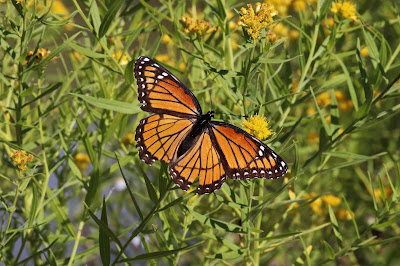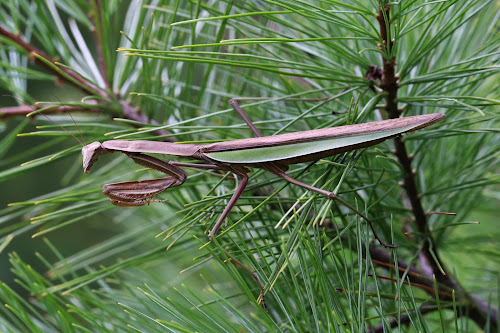I Found Slug Eggs!
While checking out a rotting log during my lunch break, I found some unknown eggs. I haven't seen eggs like these before, but I had watched a Slug on the same log the day before. When I checked some identification sites, I learned they were Leopard Slug Eggs!
The slug on the left is possibly the Mother Slug! The photo on the right I took last year of a Leopard Slug which gives some size comparison with the ring.
larva on a Tulip Tree leaf. I was able to check on it almost daily.
I was intrigued by the silk mattress that I often found it resting on. I learned
that the silk probably assists the caterpillar by helping it cling to the leaf on
windy days. It would be a long climb back up if he was blown to the ground!
I soon found it sporting its new skin and nibbling on a branch. It was at this instar stage when I knew it was an Eastern Tiger Swallowtail, rather than a Giant Swallowtail. I love the false eyes that give the illusion of a much larger caterpillar and thus helps to protect it from predators!



















































